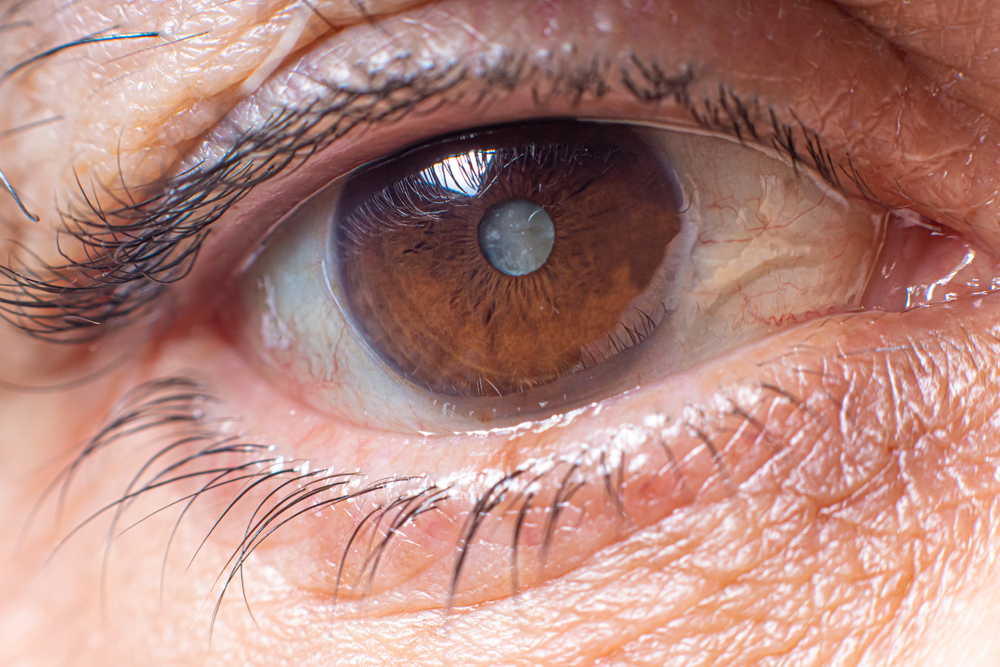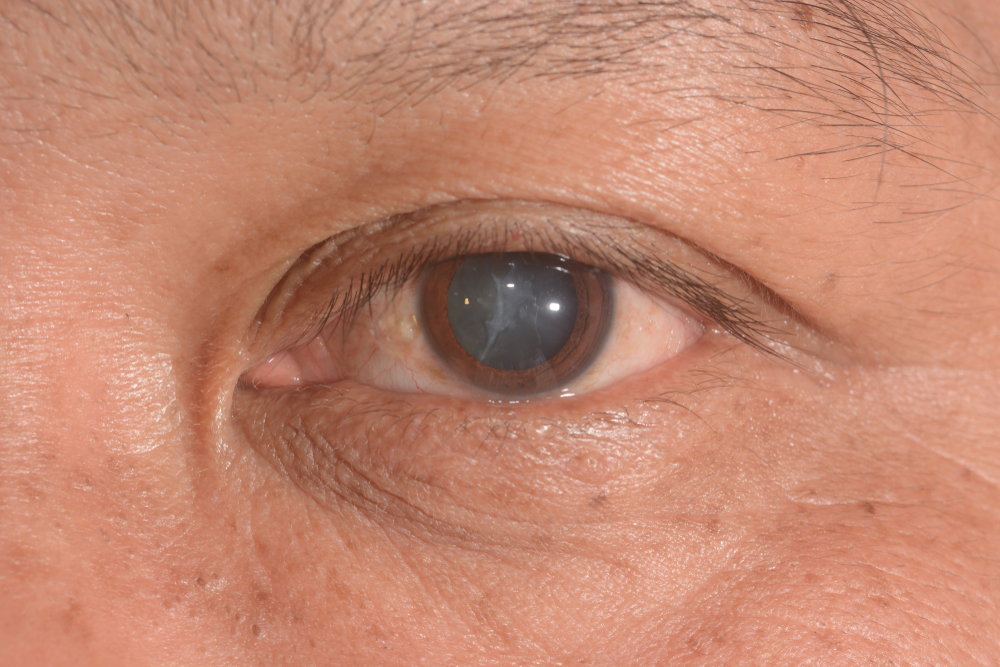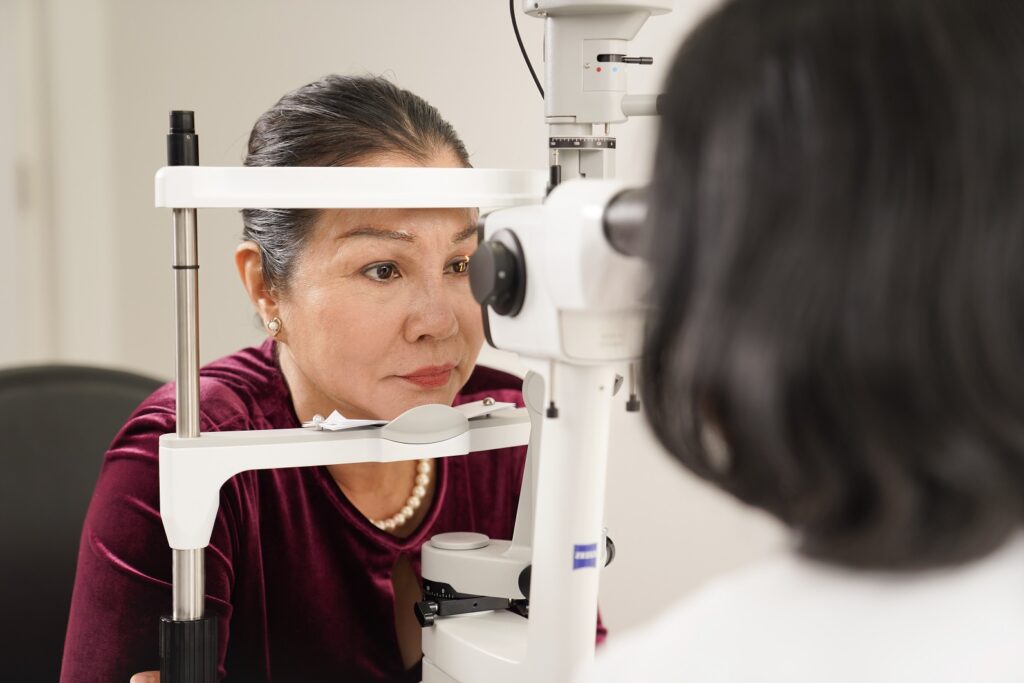
Prima Medical Center Saigon, Cataract
Consequences of Blindness owing to Cataract: Causes, Prevention and Treatment
5 October, 2023
Cataracts are still considered one of the leading causes of blindness in the world despite improvements in treatment technology. Typically, senile cataracts take several decades for vision to decline, leading to blindness.
However, some other causes can cause the disease to progress faster. Please understand the causes of blindness complications due to cataracts to know how to prevent and treat them effectively through the article below.

Why can cataracts lead to blindness?
Cataracts are a phenomenon in which proteins gather in clusters, creating opaque areas in the lens, causing the light passing through to scatter, blocking light from reaching the retina. It causes the patient’s vision to decline, become blurred, and if not treated promptly, can lead to blindness.
Over time, the lens in the eye will become increasingly cloudy due to the impact of the environment and the patient’s lifestyle. Some other causes of cataracts include steroid abuse, genetics, eye trauma, exposure to radiation, use of stimulants, and other diseases (diabetes, high blood pressure , retinopathy, uveitis, etc).
In particular, the phenomenon of protein gathering into clusters occurs faster after age 50. Therefore, aging is often a common cause. According to some statistics, when people reach the age of 80, they all develop cataracts to some degree.

Causes of diseases and their effects on vision
Age-related cataracts are the most common disease today, with a slow progression and causing blindness after several decades.
Traumatic ones are a type of disease that can cause vision loss and lead to blindness more quickly. Eye injuries caused by strong impact or cutting objects can damage the lens fibers, leading to traumatic cataracts that appear immediately or over several months.
Radiation from the sun or from medical treatments can also cause cataracts. If you have cataracts due to this cause, the patient may also lose vision more quickly.
It can also appear in children. In this case, the disease often appears at birth or develops in the first few weeks of life. Genetic factors are the cause of cataracts in children. To prevent the disease from affecting vision in the future, ophthalmologists will intervene surgically as soon as the disease is detected.
Is the risk of blindness due to cataracts high?
The risk of blindness due to cataracts is not high if the patient is screened, detected and treated early. Some warning signs include:
-
- Decreased vision, blurred vision.
- A halo appears around the object.
- Reduced color perception.
- Sensitive to light.
- Poor vision at night.
- Double look, triple look.
In the early stages of cataracts, patients often do not realize they have the disease because they do not feel the clear signs. In particular, age-related cataracts can progress so slowly that the patient is not aware of changes in their vision.
On the other hand, in the more severe stages, when the patient’s vision is seriously impaired, visual field defects occur, recognition signs become clear and frequent, and the patient knows he or she has cataracts. At the time of disease detection, seek medical attention and treatment as soon as possible to prevent blindness caused by the disease. The earlier the screening, the better the patient’s chance of achieving good vision.

Normally, cataracts can be easily reversed if patients are detected and treated promptly at a reputable ophthalmology facility. In some special cases, patients with only 1/10 vision due to cataracts can also have successful surgery and restore vision. However, surgical treatment in these cases does not guarantee maximum vision for the patient and there is a high risk of post-operative complications. Therefore, to protect your eyes from cataracts, regular examinations with an ophthalmologist every 6 months are very important.
Our Ophthalmology Care Team
- Dr THAO Vo, Chief Medical Officer , Prima Medical Center Saigon
- Dr AN Trinh, Head of General Ophthalmology
- Dr BINH Tran, Senior Consultant
- Dr TRAN Nguyen, Consultant
Prima Saigon is one of the prestigious eye hospitals in Vietnam, recognized by the US embassy in Vietnam.
If you need an eye assessment, please have a visit to Prima Medical Center Saigon
- Address: 27 Ky Dong St, District 3, HCMC
- Website: https://primahealth.vn/en/
- Business Hours: 07:30 – 17:00 from Monday – Saturday
- HOTLINE: 0919-209-039 or 1900 – 9115
Prima Saigon recommends that clients should reserve their intended consultation at least three days before their visit for convenience and less waiting time.
Cataracts are still considered one of the leading causes of blindness in the world despite improvements in treatment technology. Typically, senile cataracts take several decades for vision to decline, leading to blindness.
However, some other causes can cause the disease to progress faster. Please understand the causes of blindness complications due to cataracts to know how to prevent and treat them effectively through the article below.

Why can cataracts lead to blindness?
Cataracts are a phenomenon in which proteins gather in clusters, creating opaque areas in the lens, causing the light passing through to scatter, blocking light from reaching the retina. It causes the patient’s vision to decline, become blurred, and if not treated promptly, can lead to blindness.
Over time, the lens in the eye will become increasingly cloudy due to the impact of the environment and the patient’s lifestyle. Some other causes of cataracts include steroid abuse, genetics, eye trauma, exposure to radiation, use of stimulants, and other diseases (diabetes, high blood pressure , retinopathy, uveitis, etc).
In particular, the phenomenon of protein gathering into clusters occurs faster after age 50. Therefore, aging is often a common cause. According to some statistics, when people reach the age of 80, they all develop cataracts to some degree.

Causes of diseases and their effects on vision
Age-related cataracts are the most common disease today, with a slow progression and causing blindness after several decades.
Traumatic ones are a type of disease that can cause vision loss and lead to blindness more quickly. Eye injuries caused by strong impact or cutting objects can damage the lens fibers, leading to traumatic cataracts that appear immediately or over several months.
Radiation from the sun or from medical treatments can also cause cataracts. If you have cataracts due to this cause, the patient may also lose vision more quickly.
It can also appear in children. In this case, the disease often appears at birth or develops in the first few weeks of life. Genetic factors are the cause of cataracts in children. To prevent the disease from affecting vision in the future, ophthalmologists will intervene surgically as soon as the disease is detected.
Is the risk of blindness due to cataracts high?
The risk of blindness due to cataracts is not high if the patient is screened, detected and treated early. Some warning signs include:
-
- Decreased vision, blurred vision.
- A halo appears around the object.
- Reduced color perception.
- Sensitive to light.
- Poor vision at night.
- Double look, triple look.
In the early stages of cataracts, patients often do not realize they have the disease because they do not feel the clear signs. In particular, age-related cataracts can progress so slowly that the patient is not aware of changes in their vision.
On the other hand, in the more severe stages, when the patient’s vision is seriously impaired, visual field defects occur, recognition signs become clear and frequent, and the patient knows he or she has cataracts. At the time of disease detection, seek medical attention and treatment as soon as possible to prevent blindness caused by the disease. The earlier the screening, the better the patient’s chance of achieving good vision.

Normally, cataracts can be easily reversed if patients are detected and treated promptly at a reputable ophthalmology facility. In some special cases, patients with only 1/10 vision due to cataracts can also have successful surgery and restore vision. However, surgical treatment in these cases does not guarantee maximum vision for the patient and there is a high risk of post-operative complications. Therefore, to protect your eyes from cataracts, regular examinations with an ophthalmologist every 6 months are very important.
Our Ophthalmology Care Team
- Dr THAO Vo, Chief Medical Officer , Prima Medical Center Saigon
- Dr AN Trinh, Head of General Ophthalmology
- Dr BINH Tran, Senior Consultant
- Dr TRAN Nguyen, Consultant
Prima Saigon is one of the prestigious eye hospitals in Vietnam, recognized by the US embassy in Vietnam.
If you need an eye assessment, please have a visit to Prima Medical Center Saigon
- Address: 27 Ky Dong St, District 3, HCMC
- Website: https://primahealth.vn/en/
- Business Hours: 07:30 – 17:00 from Monday – Saturday
- HOTLINE: 0919-209-039 or 1900 – 9115
Prima Saigon recommends that clients should reserve their intended consultation at least three days before their visit for convenience and less waiting time.



